When building a garden path, use edging to keep it in place. Here’s how to install various types of edging in your yard.

Edging is a quick and easy way to form a stable edge for a pathway. And depending on the chosen material, edgings do more than keep patio and path materials inside their boundaries. They also become an integral part of the landscape design, adding color, form, and texture. We’ll introduce you to the many different types of edging—plus offer how-to tips for installing edging in your yard.
Types of Edging
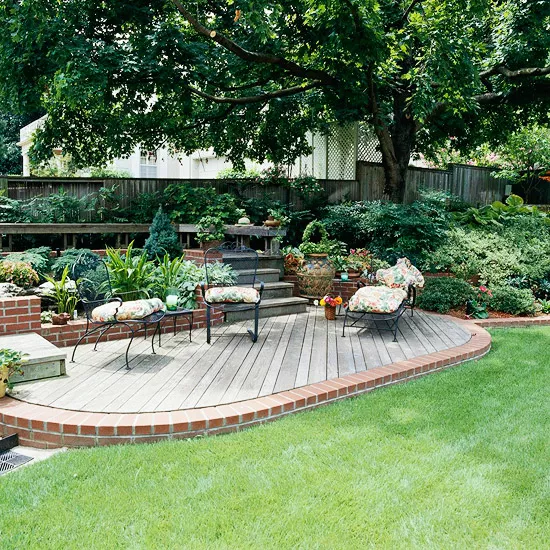
Brick: Brick is set as soldiers (standing upright and on edge), sailors (flat along the edge), or at an angle. Set brick in a concrete footing for increased stability.
Poured concrete: You can color poured concrete during mixing to match or contrast the paving material. You can also give it texture.
Plastic and steel: Flexible plastic edging will conform to almost any curve. It’s easy to install by anchoring it to the ground with spikes driven through integral lugs. Use steel edge restraints for precast pavers and any time you want to restrain the edging material without the restraint being visible.
Wood/landscape timbers: Use only wood edging made of naturally resistant species or pressure-treated stock rated for ground contact. Backfill the edges with topsoil to hide the stakes.
Stone: Both flagstone and cut stone make excellent edging, especially for wide walks. You can purchase precut stone or cut the pieces yourself from paving stones. When cutting your own, keep the width consistent so the stones don’t look mismatched.
Precast edging: Many manufacturers make precast edging or tiles to match paver patterns. They come in straight or curved shapes, many with sculpted designs. You can also use precast blocks by themselves as borders for planting beds.
How to Install Brick Edging
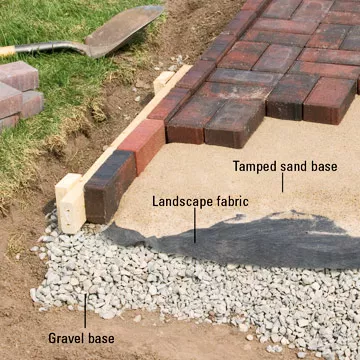
Lay out the site and excavate it to the depth required for your materials. Drive 2×4 stakes every 3 to 4 feet. Attach 2x forms to the stakes below ground level and spread the gravel base. Then spread the sand base and tamp it. Install the brick edging, setting one or two rows of paving as you go. Then backfill the edges of the site.
How to Install Flagstone Edging

Lay out the site and excavate it to the depth required for your materials. Spread the gravel base and tamp it. Set the edging along the contours of the site and anchor it with landscape spikes driven through the tabs. Then spread and tamp the sand bed, lay the paving material, and backfill the trench.
How to Install Timber Edging
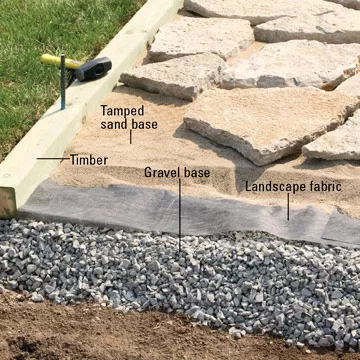
Lay out the site and excavate it to the depth local codes require for the combined thickness of paving and gravel. Include the width of the timbers in your layout. Predrill 4×4 or 6×6 landscape timbers for 1/2-inch rebar at 3-foot intervals. Spread gravel and set the timbers on it along the edges of the excavation. Drive rebar through the gravel into the soil, then spread the sand, tamp it, and lay the paving.
How to Stake Curved Edging
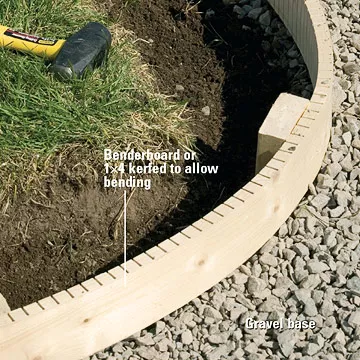
Lay out the site using a hose and chalk to mark the curve. Excavate a trench along the curve to the depth required for the base and paving materials. Then drive stakes along the trench and prepare the edging by sawing kerfs in 3/4-inch stock at 1-inch intervals. The kerf depth should be about half the thickness of the stock. Fasten the edging to the stakes and excavate the remainder of the site. Spread and tamp gravel and sand, then install the edging and paving.
How to Install a Concrete Curb
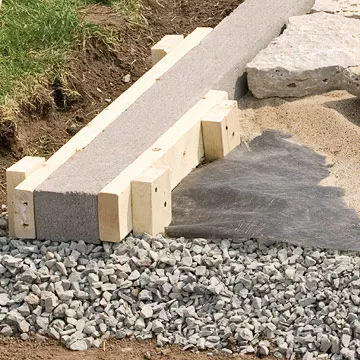
Lay out the site, including the width of the concrete curbs, and excavate it to the depth codes require. Install the staked forms and spread and tamp the gravel subbase. Pour the concrete, screed it on the forms, and finish the edge. When the concrete has cured, remove the forms, lay the sand and paving, and backfill the trench.
How to Install Plastic Edge Restraints
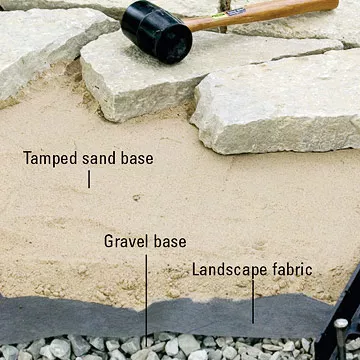
Lay out the site and excavate it to the depth required for your materials. Spread the gravel base and tamp it. Set the edging along the contours of the site and anchor it with landscape spikes driven through the tabs. Then spread and tamp the sand bed, lay the paving material, and backfill the trench.


